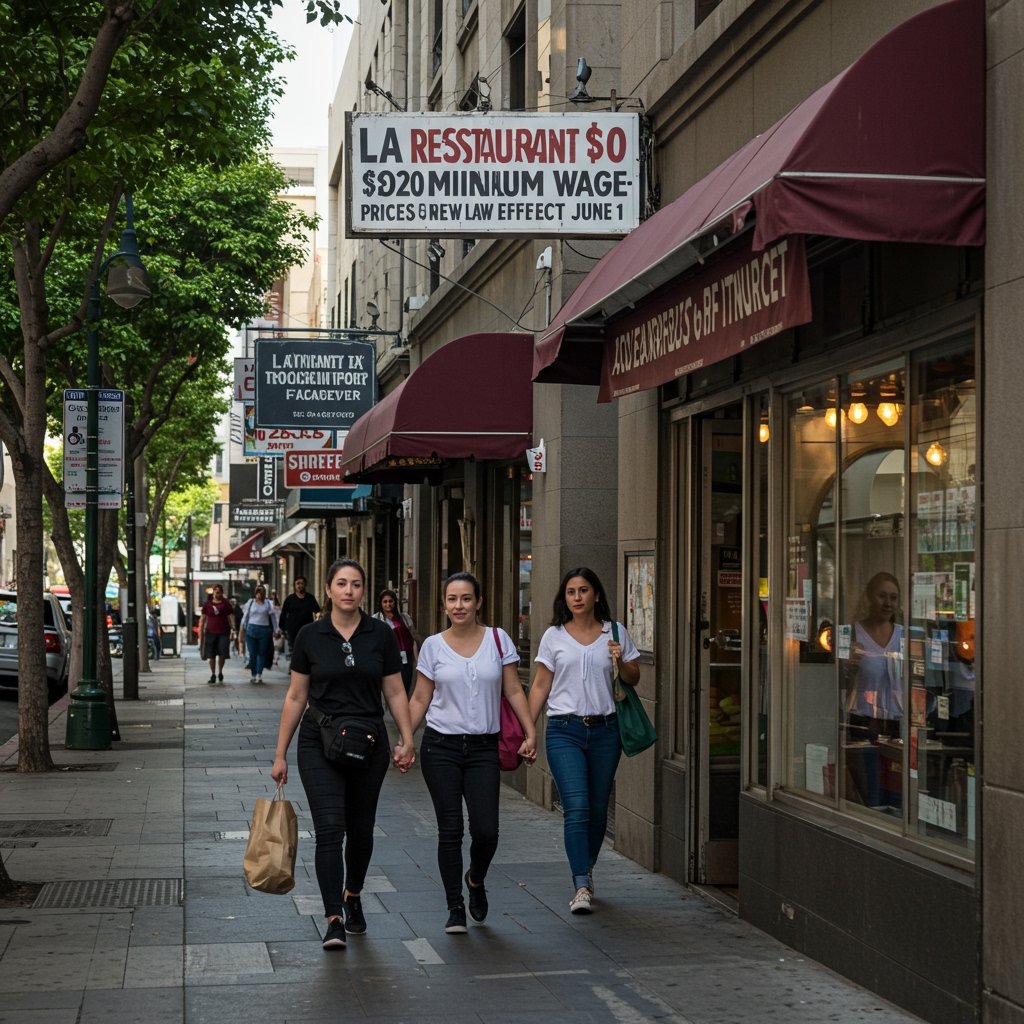Los Angeles Restaurants Navigate New $20 Minimum Wage Era
Restaurants across the bustling metropolis of Los Angeles are currently deep in the process of navigating significant shifts in their operational economics. A new chapter in labor costs has officially opened with the full implementation of a key city minimum wage ordinance specifically targeting hospitality workers. Effective June 1, 2025, a substantial increase in the hourly wage rate took hold for employees at a specific segment of the dining industry, prompting widespread adjustments and strategic re-evaluations among businesses.
The core of this transformative change is the mandated $20 per hour minimum wage. This new rate applies specifically to employees working at restaurants identified as having exceeding 60 locations globally. For these larger chain and franchise operations, the jump to $20 represents a notable escalation in labor expenses, directly impacting their overall operating costs and traditional business models. The ordinance, designed to provide hospitality workers with a higher standard of living in a high-cost region, simultaneously presents a considerable challenge for the employers obligated to comply.
The immediate and most pronounced effect for affected restaurants is the substantial increase in their labor budgets. Payroll is typically one of the largest expenses for any restaurant, and a significant mandatory increase in the minimum hourly rate, especially for businesses operating on often thin margins, necessitates immediate financial restructuring. This fiscal pressure is compelling restaurant owners and management teams to carefully scrutinize every line item of their budgets, seeking ways to absorb or offset these higher costs without compromising quality or service standards.
In response to the heightened financial burden, many independent and chain eateries falling under the purview of this ordinance are reportedly implementing menu price adjustments. Raising the cost of dishes and beverages is often the most direct method for businesses to recoup increased operating expenses. While essential for maintaining profitability, these price hikes introduce their own set of challenges, potentially impacting customer affordability and patronage in a highly competitive market. Restaurateurs are balancing the need to cover costs with the importance of remaining attractive and accessible to diners.
The strategic response extends beyond just adjusting prices. The change is actively prompting some establishments to re-evaluate their staffing levels. This could involve optimizing schedules, cross-training employees, or exploring technological solutions to enhance efficiency and potentially reduce the total number of labor hours required. Decisions regarding staffing are complex, requiring a careful balance between cost savings and the need to maintain adequate service levels to ensure a positive customer experience.
Furthermore, restaurants are looking inward at their overall operational strategies. This includes examining everything from supply chain management and waste reduction to service models and technology adoption. Businesses are exploring ways to streamline operations, improve productivity, and find efficiencies that can help mitigate the impact of higher labor costs. Innovations in kitchen technology, ordering systems, and front-of-house management are all areas being considered as part of a broader effort to adapt.
The competitive LA dining market adds another layer of complexity to this transition. Restaurants are not only competing on cuisine and service but now also on their ability to effectively manage and adapt to evolving economic conditions and regulatory changes. The success of individual establishments through this period of adjustment will likely depend on their agility, their ability to innovate, and their capacity to communicate changes effectively with both their staff and their customers.
As Los Angeles moves forward with this new wage standard for a segment of its hospitality workforce, the industry remains in a state of flux. The full effects of the $20 minimum wage, implemented on June 1, 2025, for restaurants exceeding 60 global locations, will continue to unfold over the coming months, shaping the economic landscape for businesses and influencing the dining experience for residents and visitors alike. The long-term impacts on employment levels, business sustainability, and consumer spending within the vibrant Los Angeles restaurant scene are subjects that will be closely observed by industry stakeholders and economists.





